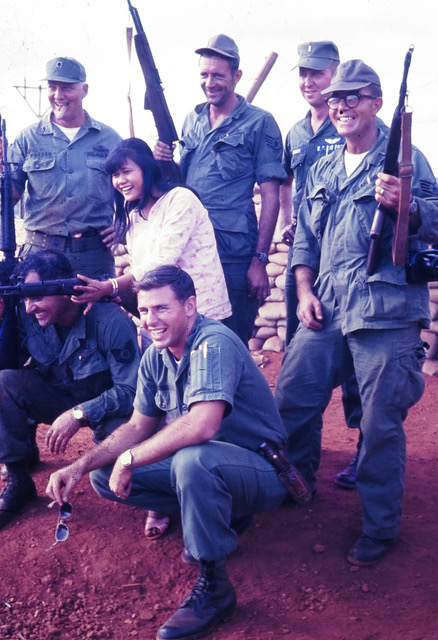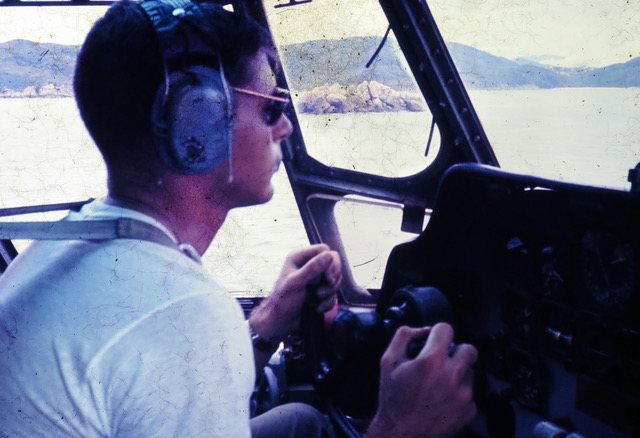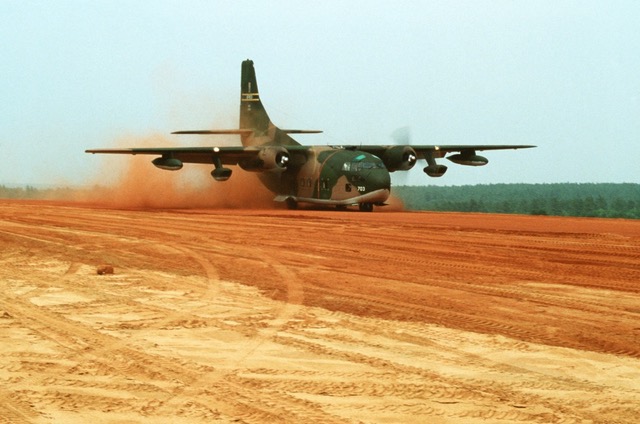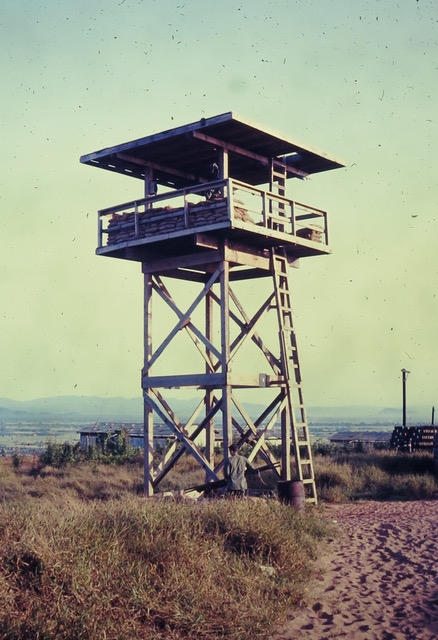

Upbringing and Education
Brue Fister was born in 1942 and grew up in Cincinnati, Ohio. He lived in the same place throughout his high school years, and said that he had good parents who “made [him] toe the line.” Fister also had a brother who was four years younger than him and also served in the Vietnam War.
After high school, Fister applied to go to the Air Force Academy in hopes of playing football there. He said that his football endeavors “didn’t turn out so good” but he was a gymnast in high school so he continued participating in the sport at the Air Force Academy. He said his team performed well and attributed their success to his coach.
Flight Training
Shortly after graduating from the Air Force Academy, Fister got married and he and his wife went to Reese Air Force Base in Lubbock, TX to learn to fly aircraft. He described his pilot training and said that he rode along with an instructor pilot for five flights in a T-37; his instructor then got out and Fister went up on a solo flight for the first time.

“So the curriculum from that point on was some with an instructor, some you were by yourself. And you know, you kind of progress through. You learn basic flying skills with acrobatics and formation flying, and then instrument flying. So the first six months was T-37s and the last six months I flew T-38s. That airplane is still flown today, believe it or not.”
After his time at Reese, Fister briefly went to Tinker Air Force Base where he was trained to fly a C-141. He then was in Dover, DE for a year and flew C-141s there before going to Hurlburt Field to get certified for the C-123.

Deployment to Vietnam
By 1967, Fister was in Vietnam flying the C-123. He was 26 years old at the time and his son was just three months old when he left. Fister and his wife sent mail and tape recordings back and forth when he was deployed and he discussed how slow the mail service was in Vietnam. Fister was active during the Tet Offensive, an event which he said he can recall very clearly. He was at Nha Trang Air Base and at the end of the day he was about to return to Phan Rang where his wing was stationed. Fister received an unexpected call saying that he had an emergency load to fly down to Phan Thiet. The army airfield at Pan Thiet had suffered a loss of electrical power from the enemy blowing up their generating capacity, so they could only light one side of the runway. Fister was never informed what side of the runway was lit up, and as he approached there were red tracer rounds going up and down the beach. His airplane was blacked out but about 1/4 mile out from the runway he flashed the landing lights so that he could see which side to line up on. Fister managed to land safely and accomplish his mission.

About ten days later, Fister flew in the Battle of Khe Sanh. The marine outpost at Khe Sanh–which consisted of just two regiments of troops–was trying to hold off two North Vietnamese divisions.
“There was a ridgeline north of Khe Sanh parallel the runway…that was occupied by the North Vietnamese. And they could, you know, they could see when we landed and then they’d start lobbing these mortars in on the field and I’m convinced that they had the field laid out in grid squares…it wasn’t an accident that these dadgum mortar rounds just kept following me”
The first time that Fister flew a C-123 to land at Khe Sanh, he was transporting 8000 pounds of HE rocket heads. After offloading his cargo, they took as many marines aboard the aircraft as they could without stopping and took off in the opposite direction. From January to early April of 1968, Fister flew into Khe Sanh four times.
Fister was often given a load of weapons or supplies to bring from one place to another in the C-123 transport plane that he flew during his time in Vietnam. However, he would also fly medevac missions that entailed bringing injured men to various hospitals. In the audio clip below he discusses one such case.
Return Home
Following his time in Vietnam, Fister initially came back to McCord Air Force Base where he then flew to Cincinnati, OH to return to his wife and son. He was well received and did not experience the harassment that some veterans were subjected to. Fister flew missions out of Charleston Airport for a little over three years from 1968 to 1971. He would often fly up to McGuire Air Force Base, pick up a load of supplies, and then fly to Elmendorf Air Force Base in Alaska. He continued to fly into Vietnam about once or twice a month though he was now stationed in the United States. He also flew to other bases in Southeast Asia, including some in Thailand, the Philippines, and Okinawa.
In 1971, Fister returned to graduate school where he studied air mechanical engineering. Once he finished graduate school, he worked as an operational test manager where he did proficiency flights to test new equipment. Fister served in this capacity until he retired from his 32 year career in the Air Force in 1996.

In his time in Vietnam serving in the 310 Air Commando Squadron, Fister
- had over 1000 hours of combat time and flew 1320 sorties
- landed in 73 different airfields in Vietnam
- was promoted from Lieutenant to Captian
- was only hit twice in the year he was there
Over the course of his career as a whole, he
- Flew 3000 hours in a C-141 aircraft
- Flew 1100 hours in a C-123 aircraft
- Flew 2000 hours in a C-130 aircraft
- Flew MH60 and MH53 helicopters
- Has been to 53 countries
Mr. Fister was very humble about what he did and during the interview made multiple statements (regarding challenging missions that he flew) to the effect of “it wasn’t that big of a deal.” He described himself as a reckless hotshot pilot and said that often he didn’t worry about the dangerous flight missions because in his own words he was “too young and stupid to really get stressed out very much about any of it.”
Captain Bruce Fister now lives in Niceville, Florida. He is 81 years old, his son is 57, and his brother passed away a couple of years ago. I am not sure about his wife. When I interviewed him on the phone, he described how he had gone on a pleasant boat ride up into the bayou earlier that day. He is active in the local Coast Guard Auxiliary.
There is a common perception that veterans of the Vietnam War do not want to discuss what they experienced. I went into the interview expecting that this might be the case with Bruce Fister, but I was mistaken. There is a great disparity in what each participant in Vietnam went through, and some of them such as Fister were not as exposed to the horrors of war. He didn’t seem to find his time in Vietnam to be all that unpleasant, and was certainly open when discussing it. The interview was very enlightening regarding the fact that not everyone suffers during their time in war and therefore there is a lot of disparity in terms of the openness of veterans even from the same conflict and era.